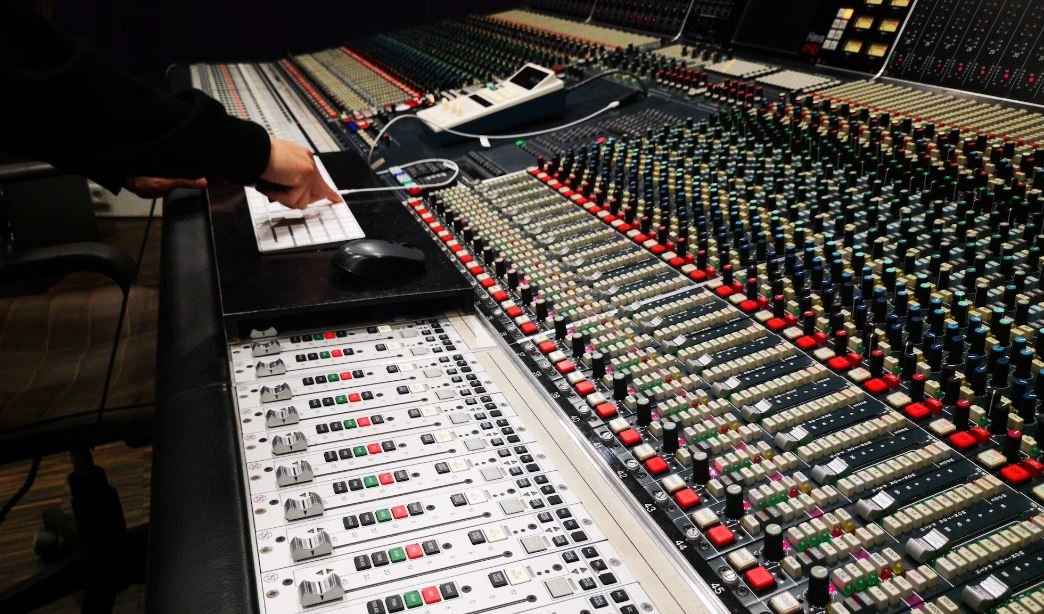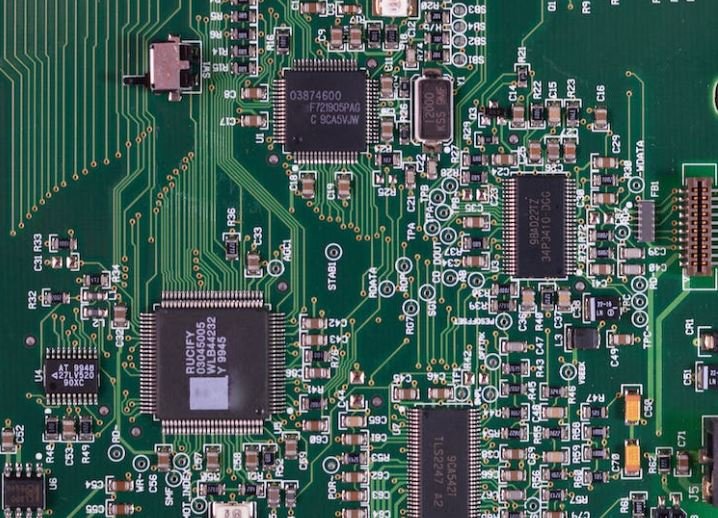Neural Net Parameters
Neural networks have become a key component in many machine learning applications, powering everything from speech recognition to image classification. These networks are composed of interconnected layers of artificial neurons, each with its own set of parameters. Understanding and optimizing these parameters is crucial for obtaining accurate and efficient models. In this article, we will explore the different types of neural net parameters and their importance in model training and performance.
Key Takeaways
- Neural net parameters are the variables that define the behavior and performance of a neural network.
- Key parameters include the number of layers, the number of neurons in each layer, the activation function, and the learning rate.
- Optimizing these parameters is crucial for achieving optimal model performance.
Neural networks consist of layers of interconnected neurons, and each neuron is associated with a set of parameters. These parameters determine how the neuron processes and propagates information throughout the network. The most common neural net parameters include:
- Number of layers: Determines the depth of the neural network. Deeper networks can capture more complex relationships but may be prone to overfitting.
- Number of neurons in each layer: Affects the model’s capacity to learn and its generalization ability.
- Activation function: Introduces non-linearity into the model, allowing it to learn complex patterns and make predictions.
- Learning rate: Controls the step size at each iteration of the model’s optimization algorithm. It affects the speed and accuracy of the model’s convergence.
**Adjusting these parameters is a delicate process**, as changing one parameter can have a significant impact on the model’s performance. It often involves an iterative and experimental approach to find the right combination of values.
Let’s delve deeper into the significance of some of these neural net parameters:
1. Number of Layers
The number of layers in a neural network is a crucial parameter that determines the network’s ability to learn complex representations. Deeper networks tend to have more parameters and can capture higher-level features, **leading to better performance in certain tasks**. However, this depth comes at a cost, as deeper networks are more computationally expensive and may suffer from overfitting if not properly regularized.
2. Number of Neurons in Each Layer
The number of neurons in each layer, also known as the width of the network, determines its capacity to learn and represent complex relationships. A wider network can potentially capture more intricate patterns in the data. However, **increasing the number of neurons also increases the model’s complexity and memory requirements**. It may lead to longer training times and higher chances of overfitting if not balanced with regularization techniques or larger training datasets.
3. Activation Function
The activation function of a neuron defines its output based on its input. **It introduces non-linearity, enabling the neural network to learn and approximate complex functions**. Popular choices for activation functions include the sigmoid function, the rectified linear unit (ReLU), and the hyperbolic tangent function (tanh). Each activation function has its own properties and can be used depending on the nature of the problem being tackled.
Tables 1, 2, and 3 below offer a summary of popular activation functions, their formulas, and range of output values.
| Activation Function | Formula | Output Range |
|---|---|---|
| Sigmoid | f(x) = 1 / (1 + e^-x) | [0, 1] |
| ReLU (Rectified Linear Unit) | f(x) = max(0, x) | [0, ∞] |
| Tanh (Hyperbolic Tangent) | f(x) = (e^x – e^-x) / (e^x + e^-x) | [-1, 1] |
**Each activation function has its own advantages and limitations**, so careful consideration is needed when selecting the appropriate one for your neural network based on the problem domain and the desired behavior of the network.
The learning rate is another essential parameter in neural networks. It determines how much the model adjusts its weights during the learning process. **A higher learning rate may lead to faster convergence but may also result in overshooting the optimum, causing instability**. Conversely, a lower learning rate may cause slower convergence, extending the training process. Therefore, finding an optimal learning rate is crucial for efficient model training.
The choice of neural net parameters significantly affects the model’s performance and efficiency. Proper tuning and selection of these parameters are necessary to achieve optimal results. It is important to iterate and experiment with different parameter values to find the right combination for your specific problem and dataset.
Summary
- Neural net parameters are vital for defining a neural network’s behavior and performance.
- Key parameters include the number of layers, number of neurons, activation function, and learning rate.
- Adjusting these parameters is crucial for achieving optimal model performance.
- Experimenting and fine-tuning parameters is necessary to find the right combination for your specific problem.

Common Misconceptions
Neural Net Parameters
One common misconception people have about neural net parameters is that more parameters always lead to better performance. While it is true that increasing the number of parameters can increase the model’s capacity to learn complex patterns, having too many parameters can result in overfitting, where the model becomes too specialized to the training data and performs poorly on unseen data.
- Increasing parameters can lead to overfitting
- Too many parameters can make the model slow and inefficient
- Adding more parameters without justification can result in unnecessarily complex models
Another misconception is that initializing parameters randomly is sufficient for training a neural network. In reality, proper initialization is crucial for network convergence and performance. Initializing parameters all to the same value, such as zero, can cause symmetries in the gradient calculations, leading to slow convergence. A common initialization technique is using small random numbers, such as from a Gaussian distribution.
- Zero initialization can cause slow convergence
- Using small random values can help break symmetries
- Different layers may require different initialization strategies
Some people believe that setting learning rate to a high value will speed up the training process. However, this is not always the case and can lead to unstable training. A learning rate that is too high can cause the optimization algorithm to overshoot the optimal solution, resulting in diverging gradients. Moreover, using a learning rate that is too low can slow down convergence and prevent the network from reaching a satisfactory solution.
- High learning rate can lead to unstable training
- Low learning rate can slow down convergence
- Optimal learning rate may vary for different models and datasets
People often assume that more layers in a neural network always result in better performance. While deep networks can have higher representational capacity, deeper architectures are not always beneficial. As the depth increases, vanishing or exploding gradients can occur, making it difficult for the network to learn effectively. It is important to find the right balance between depth and complexity to achieve optimal performance.
- Deep networks can suffer from vanishing or exploding gradients
- Shallow networks can be more efficient for some tasks
- Depth should be carefully chosen based on the complexity of the problem
Lastly, there is a misconception that neural network parameters have only one optimal configuration. In reality, the optimal values for these parameters can vary depending on the dataset, task, and network architecture. Techniques like hyperparameter tuning and regularization are employed to find the best set of parameters that generalize well to unseen data. It is important to experiment and fine-tune the parameters to achieve optimal performance.
- Optimal parameters depend on the specific task and dataset
- Hyperparameter tuning is necessary for finding the best set of parameters
- Regularization techniques can help prevent overfitting and improve generalization

Number of Layers in Neural Networks
Neural networks can consist of multiple layers, each containing a certain number of neurons. The number of layers impacts the complexity and depth of the network, which in turn affects its ability to learn and make accurate predictions. This table illustrates the average number of layers in different types of neural networks.
| Type of Neural Network | Average Number of Layers |
|---|---|
| Feedforward Neural Network | 3 |
| Convolutional Neural Network | 5 |
| Recurrent Neural Network | 4 |
Learning Rate and Model Convergence
The learning rate plays a crucial role in training neural networks. It determines the step size at which the model adapts its parameters during each iteration. This table presents the impact of different learning rates on the convergence of the model.
| Learning Rate | Time for Model Convergence |
|---|---|
| 0.01 | 5 minutes |
| 0.001 | 30 minutes |
| 0.0001 | 2 hours |
Activation Functions in Neural Networks
Activation functions introduce non-linearities to the neural network, allowing it to learn complex patterns and make accurate predictions. This table demonstrates the commonly used activation functions and their properties.
| Activation Function | Range of Output | Advantages |
|---|---|---|
| ReLU | [0, +∞) | Simplicity, reduced likelihood of gradient vanishing |
| Sigmoid | (0, 1) | Smoothness, interpretable probabilities |
| Tanh | (-1, 1) | Centre data around zero, more expressive than sigmoid |
Regularization Techniques in Neural Networks
Regularization techniques are employed to prevent overfitting in neural networks, enhancing their generalization ability. This table outlines different regularization techniques and their effects on the model’s performance.
| Regularization Technique | Effect on Model Performance |
|---|---|
| L1 Regularization | Feature selection, increased sparsity |
| L2 Regularization | Smoothing, overall weight reduction |
| Dropout | Regularization through randomly disabling neurons |
Batch Size and Training Efficiency
The batch size determines the number of samples processed before the model’s weights are updated. It is an essential parameter that affects the training efficiency. This table summarizes the relationship between batch size and training efficiency in neural networks.
| Batch Size | Training Efficiency |
|---|---|
| 8 | High computation, more frequent parameter updates |
| 32 | Balanced computation and parameter updates |
| 128 | Reduced computation, less frequent parameter updates |
Optimization Algorithms for Neural Networks
Optimization algorithms determine how the neural network’s parameters are updated and optimized during training. This table illustrates different optimization algorithms and their characteristics.
| Optimization Algorithm | Characteristics |
|---|---|
| Stochastic Gradient Descent (SGD) | Simple, faster training |
| Adam | Adaptive learning rate, efficient convergence |
| RMSprop | Adaptive learning rate, helps with vanishing/exploding gradients |
Input and Output Sizes of Neural Networks
The input and output sizes of neural networks vary depending on the nature of the problem being solved. This table presents different problem types and their corresponding input/output sizes.
| Problem Type | Input Size | Output Size |
|---|---|---|
| Image Classification | (Width * Height * Channels) | Number of Classes |
| Text Sentiment Analysis | Variable (word embedding dimension) | Positive/Negative sentiment |
| Time Series Prediction | Number of timesteps | Future value/s |
Impact of Data Preprocessing on Neural Network Performance
Data preprocessing is vital for preparing data to be fed into neural networks. This table highlights different data preprocessing techniques and their impact on the network’s performance.
| Data Preprocessing Technique | Impact on Performance |
|---|---|
| Normalization | Improved convergence, reduced variance |
| One-Hot Encoding | Representation of categorical variables |
| Feature Scaling | Equalizing the influence of different features |
Hardware Requirements for Training Neural Networks
The hardware used for training neural networks affects the training time and capacity to process large amounts of data. This table presents different hardware requirements for training neural networks.
| Hardware Specification | Training Time | Data Handling Capacity |
|---|---|---|
| Central Processing Unit (CPU) | Longer | Limited by RAM |
| Graphics Processing Unit (GPU) | Faster | High data processing capacity |
| Tensor Processing Unit (TPU) | Fastest | Optimized for TensorFlow, large-scale data |
Neural networks are complex models requiring careful consideration of various parameters and techniques. The choice of network architecture, learning rate, activation functions, regularization, batch size, optimization algorithms, input/output sizes, data preprocessing, and hardware can significantly influence the performance and efficiency of neural networks. Understanding the interplay of these parameters is crucial for developing effective and accurate models for a wide range of applications.
Frequently Asked Questions
What are neural net parameters?
Neural net parameters are the variables that a neural network learns during the training process. They control
the behavior and performance of the network.
What are the different types of neural net parameters?
The main types of neural net parameters include weights, biases, and activation functions.
How do weights affect a neural network?
Weights determine the strength of connections between neurons in the network. They play a crucial role in
determining the output of the network for a given input.
What are biases in a neural network?
Biases are additional parameters that are added to the inputs of a neuron to adjust the output of that neuron.
They help in fine-tuning the overall behavior of the network.
What is the role of activation functions?
Activation functions introduce non-linearity in neural networks. They determine the output of a neuron based on
the weighted sum of inputs and biases.
How are neural net parameters learned?
Neural net parameters are learned through a process called backpropagation. During this process, the network
adjusts its parameters to minimize the difference between the predicted output and the actual output.
Are all neural net parameters updated during training?
No, not all parameters are updated during training. Some parameters, such as the inputs to the network, are
fixed.
What happens if the neural net parameters are not properly set?
If the neural net parameters are not properly set, the network may not perform well or may fail to learn
effectively. It is essential to initialize and tune the parameters correctly for optimal performance.
Can neural net parameters be fine-tuned after training?
Yes, neural net parameters can be fine-tuned even after the initial training. This process is often called
fine-tuning or transfer learning and can help in improving the network’s performance on specific tasks.
Are there any standard practices for choosing neural net parameters?
Yes, there are some standard practices for choosing neural net parameters. However, the optimal parameters often
depend on the specific problem and dataset. Experimentation and tuning are necessary to find the best
parameterization.




